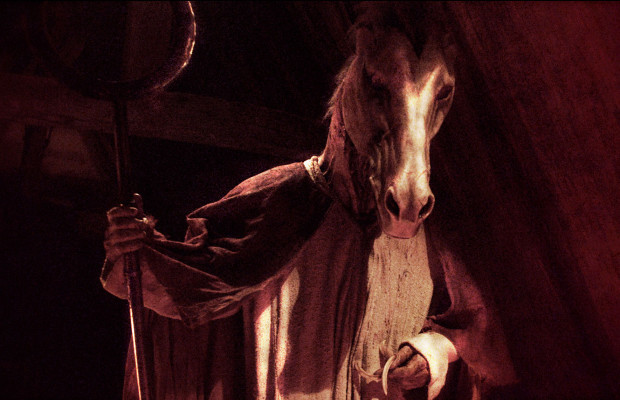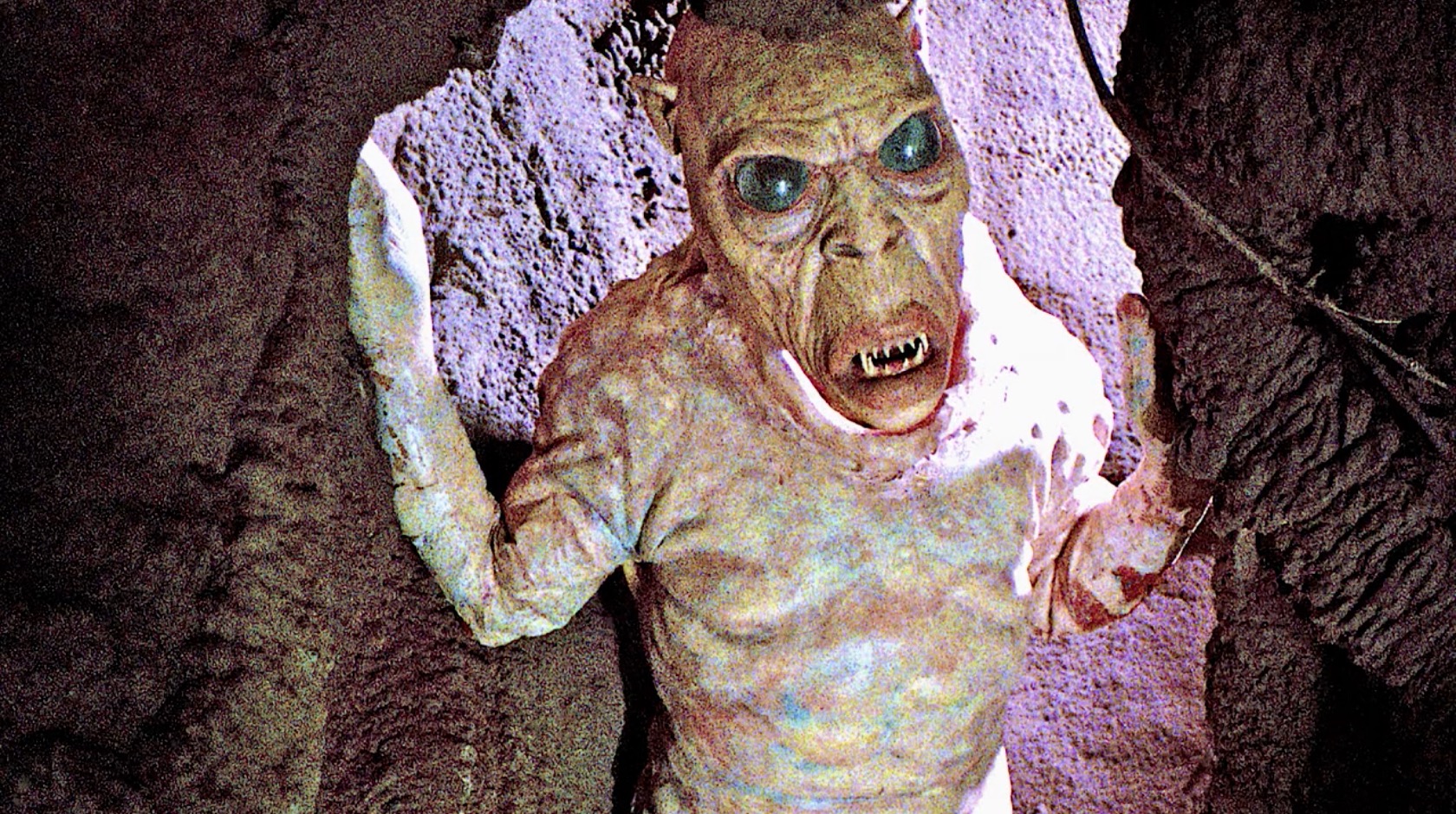Home Video
[Review] Nightmarish Imagery and a Demanding Story Weigh On ‘Horsehead’

You would think that after films like A Nightmare On Elm Street and The Cell, the topic of dreams in horror would have been explored to its fullest. Or, if you’re more the optimist, why hasn’t the topic of dreams been explored in horror more often? It seems like French director Romain Basset is of the latter type, as his debut film Horsehead (aka Fievre) takes the groundwork set out by Wes Craven, and puts into motion a film that’s as visually surreal as it is memorable, though not for all the right reasons.
Ever since she was little, Jessica (Lilly Fleur-Pointeaux) has experienced surreal and frightening dreams to which she has no explanation as to their origin. As a result, she’s been going to school to study the psychophysiology of dreams, as well as follow a therapy with her mentor and boyfriend, Sean (Shane Woodward). After the death of her estranged grandmother, Jessica ventures to her mother (Catriona MacColl) and stepfather’s (Murray Head) home to pay her respects. Jessica has a strained relationship with her mother, and informs Jessica that the room she’ll be staying in is right next to her grandmother’s room, which also has her body. After a rough first night in which through her dreams, Jessica meets her dead grandmother, Jessica falls ill. Lying in bed with a fever, she decides to try lucid dreaming. What follows is Jessica’s nightmarish journey to uncover the secrets of her family’s past.
Right from the get-go, Horsehead hits the viewer with the surreal imagery of Jessica’s dreams. In contrast to Guillermo del Toro’s fantasy dreamworld in Pan’s Labyrinth, Horsehead is definitely not one of those “feel-good” films. There are some particularly heavy scenes involving abortions and other twisted visuals, many of which involve the titular character. This isn’t one of those horse masks you find on Amazon. Horsehead is far more creepy and scary, dressed in priest’s clothes and carrying a bishop’s crosier while snorting smoke. In true horror movie fashion, we never do get a good long look at the character until much later in the film. Not to be content with just showing bizarre imagery, all of Horsehead‘s visuals are dominated by Basset’s command of the camera. The dream world that Jessica visits often makes liberal use of the colour red, contrasted with cold blues. In fact, the lighting itself is key throughout the entire film, both in the dream world and in the waking world. Jessica’s interactions with her parents are always presented in a dim, yellow light that along with the terse interactions, heightens the tension between mother and daughter. Adding to it all is the cropping of the shots, which tend to make the interactions feel uncomfortably cramped and hostile. It all makes for a very striking visual style that, in combination with the amazing soundtrack provided by Benjamin Shielden, definitely leaves a lasting impression.
Complimenting the visuals are the actors, all of whom are on point. Granted, they aren’t the focus of the film, but put in the needed believability to ground the moments in the real world. Lilly Fleur-Pointeaux gets put through the wringer with this film, both in the dream world and in the waking world when having to do scenes with genre veteran (and Fulci fave) Catriona MacColl. The duo really meshed well, and created some definitely tense moments. Murray Head is kind of left to the background as Jim, but he still provides the role of peacemaker attempting to bridge the gap between the two women, while also trying to remain neutral. The acting in the dream world sequences are appropriately exaggerated, but not to the point of being hokey or over-the-top.
As much as everyone praises the visual style that Basset presents in Horsehead (and rightfully so), the film’s story is a little less impressive. There’s no doubt that “style over substance” rules this one. Now I know that there will be people who say that if you’re confused about the film’s story, you didn’t “get it”. Which isn’t entirely true. While the film warrants repeated viewings, the story is still muddled, as we’re never entirely clear whether Jessica is truly awake or asleep, or what is real or imagined. As such, some of the symbolism used while in the dreams isn’t entirely made clear in the film upon first viewing, which makes the story that much more difficult to comprehend. Other times, Basset’s indulgence on dream imagery begs the question of why, when there’s already so much symbolism for the viewer to sift through. Sure, a room bathed in red light with countless ticking metronomes, coupled with a soundtrack that eventually reaches a crescendo at the same moment Jessica awakens looks cool, but really that’s all it is. There are other scenes, such as the mixture of religious imagery — Horsehead’s clothes, the abortion in a cathedral and Jessica seeing herself crucified topless — that may seem like they’re trying to be provocative, but again are there simply for eye candy. This delighting in the arthouse visuals runs the risk of frustrating for the viewer, who may not be in the mood for trying to piece together a story that already demands attention.
I wouldn’t say that I didn’t like Horsehead. Far from it. Basset’s command of the film’s visuals is nothing short of amazing, and has me longing for the days of Dario Argento’s classics. The film is wonderfully shot, coupled with smart use of colour, some truly creepy imagery and a soundtrack that perfectly compliments the film’s tone. However, the story takes a backseat to it all, and the viewer is left to constantly be on their toes to discern what’s going on, and what represents what in Jessica’s dreamworld. What makes it worse is that some imagery is seemingly put in just for the sake of being visually interesting, which is frustrating when you’re already trying to piece together what’s going on. Obviously, Horsehead warrants repeat viewings, both for the chance to see more of the dream world, and also to try and figure out the story in all of this. It’s a definite recommendation, but those looking for a complete package of effective storytelling and frightening visuals will be scratching their heads.

Home Video
Gateway Horror Classic ‘The Gate’ Returns to Life With Blu-ray SteelBook in May

One of my personal favorite horror movies of all time, 1987’s gateway horror classic The Gate is opening back up on May 14 with a brand new Blu-ray SteelBook release from Lionsgate!
The new release will feature fresh SteelBook artwork from Vance Kelly, seen below.
Special Features, all of which were previously released, include…
- Audio Commentaries
- Director Tibor Takacs, Writer Michael Nankin, and Special Effects Designer & Supervisor Randall William Cook
- Special Effects Designer & Supervisor Randall William Cook, Special Make-Up Effects Artist Craig Reardon, Special Effects Artist Frank Carere, and Matte Photographer Bill Taylor
- Isolated Score Selections and Audio Interview
- Featurettes:
- The Gate: Unlocked
- Minion Maker
- From Hell It Came
- The Workman Speaks!
- Made in Canada
- From Hell: The Creatures & Demons of The Gate
- The Gatekeepers
- Vintage Featurette: Making of The Gate
- Teaser Trailer
- Theatrical Trailer
- TV Spot
- Storyboard Gallery
- Behind-the-Scenes Still Gallery
When best friends Glen (Stephen Dorff) and Terry (Louis Tripp) stumble across a mysterious crystalline rock in Glen’s backyard, they quickly dig up the newly sodden lawn searching for more precious stones. Instead, they unearth The Gate — an underground chamber of terrifying demonic evil. The teenagers soon understand what evil they’ve released as they are overcome with an assortment of horrific experiences. With fiendish followers invading suburbia, it’s now up to the kids to discover the secret that can lock The Gate forever . . . if it’s not too late.
If you’ve never seen The Gate, it’s now streaming on Prime Video and Tubi.














You must be logged in to post a comment.